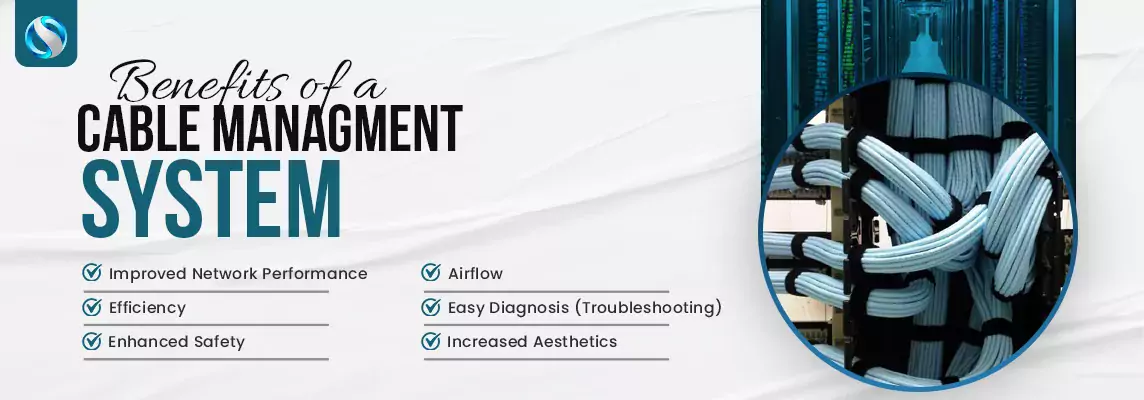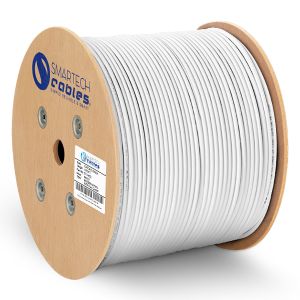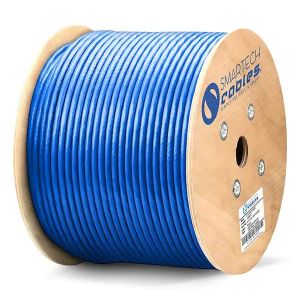Top Tips For Network Cable Management: Step Towards Optimal Performance
Top Tips For Network Cable Management: Step Towards Optimal Performance

Why do you need a proper cabling system? This blog explains the network cable management guide, tips, and how you can efficiently manage the cable with patch panels. The aesthetics of professional cabling infrastructure.
Is managing cable important? 100%. The managed cable hierarchy shows a professional look at a data center or an office networking environment. But what if you are not practicing this phenomenon of managing cable? The messy cable spaghetti is an unhappy experience for installers or during cable expansion. It's hard to find space in a messy cable environment.
But the story is different for the managed cable. It could impact your networking performance, increase the time for troubleshooting the cables, or find a fault in a specific server. It also prevents cables from overheating or from catching fire.
This blog will explain all about network cable management, its benefits, and a network cable management guide. So stay focused to learn more about cable management. Before delving into the depth of the cable management guide, let’s explore a bit more by starting it with the question, “What is a cable management system?”
What is a Cable Management System?
When you think about cable management systems what thought comes into your mind, like what type of cables do you need to manage? And why it is necessary to align the network cables professionally. As the name suggests “Cable Management System” refers to efficiently structuring cables.
In other words, the cable management system is a methodology that includes a series of tools, and equipment that is necessary to route and organize power cables and Ethernet Cables systematically. The need to organize cables is to prevent the tangling of power cables or network cables to secure performance and safety. Let’s quickly have a glance at the key factors of a Cable Management System.
-
Organization
- Coaxial, power, and network cables can be damageable and the main goal is to protect the cable from kinks or major causes to the cable that can disturb its functionality. There is a simple and easy practice when you are cabling the entire structure of buildings or offices label the cable for easy identification. It also adds color coding of wires and bundles the cable with velcro straps and zip ties.
-
Routing
- This is the process in cabling where each cable according to its designation is used to install by using the cable trays, wall plates, and conduits. Proper routing eliminates the chances of cable clutter and also being tripped over or damaged.
-
Protection
- Properly managed cables will lessen the environmental hazards and protect the cables from damage. Properly managing cables according to horizontal and vertical needs.
Benefits of a Cable Management System
Here are some cable management system tips for you to imitate because doing such things won’t strike a copyright. Here are the tips that you need to know.

- Improved Network Performance — cable routing in a well-organized manner maintains the data flow without being interrupted. It minimizes the signal integrity (Crosstalk) and provides the maximum functionality.
- Efficiency — proper cables can be managed easily if the problem persists when you can’t afford to lose network access. It simply increases the efficiency of your network functionality.
- Enhanced Safety — minimizes tripping hazards, electrical accidents, and overheating of the cables. If ignored, the consequences might be fatal.
- Airflow — Maintaining airflow within the installed cable is very crucial for keeping them breathing or releasing heat. A tight bundle of cables if they remain tight in the conduit might cause severe damage. All cables except fiber optic mode of transmission are current so you better create enough space for the cables.
- Easy Diagnosis (Troubleshooting) — This will be helpful for the maintenance personnel to easily identify the location and the server that is not working properly. This is done easily by color coding, labeling, and
- Increased Aesthetics — An organized network will lessen the burden of solving the cabling issue and provide a professional look to data centers, network closets, and office environments.
Applications of Cable Management Systems
Power cables and network cables can be installed within buildings in horizontal and vertical runs that may go to different locations of the buildings. Mainly network cables like Cat5e, Cat6, and Cat6a cables are used for various purposes. Similarly, fiber optic cables or patch cords are frequently used in data centers and with patch panels. There are some patch panel management techniques that we will discuss in this blog.
Guaranteed Best Price !
There are a few applications for cable management systems to provide the best possible seamless cabling infrastructure. Following are the applications.
- Data Centers
- Office Networks
- Home Networks
- Industrial Settings
- Factory Network
- Health Care
- Educational Centers
- Commercial Setups
Some essential tips for cable management should be practiced while deploying the cables. It will deliver the best results for your overall cabling solution.
- Cable Labels — For easy identification of the connection type labeling is important.
- Cable Ties and Velcro Straps — tie the cable with cable ties and velcro straps for rigid installation. Do not make tight fittings.
- Cable Trays and Channels — Maintain cable trays and channels according to the size of your location.
- Cable Tester — Always test the cable before deployment to identify the faults if any.
- Patch Panel — Acts as a central bridge for network cables in a server rack.
These are the few points that you should consider while installing the cables to make them look clean and airy. Some points are forbidden in managing cables like
- Bundling cable with a rubber band
- With cotton or polyester thread
- Bundling cable with plastic or thread tightly
- Tight installation of network cables
This is the first part of the cable management system the other part of the blog will cover some important steps for cable management and also how to manage cable with patch panels. This manual guide surely helps you how to maintain a healthy and well-structured cabling infrastructure.







